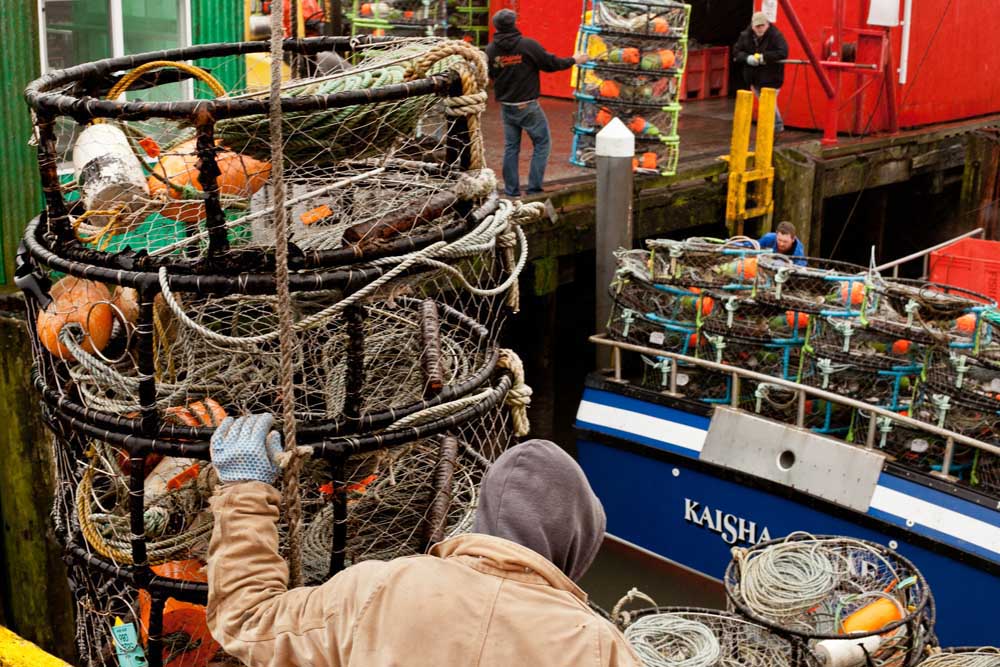New ‘Blob’ on the horizon?
Published 12:12 pm Sunday, July 23, 2023

- A large ocean heatwave that started in 2014 and dissipated in 2016 harmed the marine environment and inflicted local economic pain by interfering with commercial crabbing and recreational clamming.
LONG BEACH — There’s growing concern an expanding zone of warm seawater spiked by a strengthening El Niño may result in conditions like those in 2014-15 when North Pacific sea life was devastated, a disaster that rippled through the regional economy.
Trending
This came to be called the Blob. The entire Pacific Ocean food chain was thrown wildly out of whack, causing what a University of Washington scientist called probably “the largest documented seabird mortality event in world history.” Pollock, a white-fleshed fish species made into fish sticks and many other products, virtually disappeared from the Gulf of Alaska where they are ordinarily found in vast numbers. Whales starved to death.
“Indeed there are some relatively warm waters along the coast of the Pacific NW,” Washington state Climatologist Nick Bond told the Chinook Observer last week. “This has been the case for a while off the coast of BC northwest of Vancouver Island, but more recently it has made an appearance farther south in the coastal waters.”
It’s too soon to say whether severe Blob-like conditions will persist long enough to become a big problem. Currently, NOAA’s Physical Sciences Laboratory says there is a 30-50% chance of a marine heat wave along the U.S. West Coast and the Gulf of Alaska next spring.
Trending
Heatwave offshore
However, monitoring by NOAA’s Integrated Ecosystem Assessment (IEA) program shows there already is a vast area of seawater more than 5 degrees Fahrenheit warmer than normal off the coast of Washington, Oregon and British Columbia. IEA has recorded daily sea-surface temperatures within the top 10% seen for that region over the past 40 years.
Monitoring on behalf of tuna fishermen (nvs.nanoos.org/TunaFish) showed seawater a comparatively balmy 64-plus degrees just off the continental shelf beyond the 90-fathom (540-foot) line on July 25. Between July 7 and 21, a colder strip of seawater along the coast dissipated and was replaced by warmer water, IEA diagrams show. Close along the Long Beach Peninsula, sea temps currently range from 58 to 66 degrees.
“El Niño combined with the current large offshore marine heatwave, may indicate the system is heading towards conditions similar to that encountered in 2014-2015, the last period during which we had a similar confluence of these two extremes,” IEA reported on July 20.
Federal scientists say there is a greater than 90% chance that El Niño will persist through the Northern Hemisphere winter. It is feared this zone of hot water along the equator west of South America could contribute to making 2023 the hottest year in human history, with some of that heat being absorbed by the oceans.
In 2015 on the Washington coast, too-warm water was bad news for the base of the ocean food chain. There was a population crash of nutrient-rich sub-Arctic copepods — tiny local crustaceans in the group of animals that also includes crab and shrimp. They were supplanted by much less nutritious warm-water species from farther south.
Domoic connection
The warm water also caused a population explosion in a set of microscopic life called Pseudo-nitzschia, some of which produce the marine toxin domoic acid. In 2015 a massive bloom of Pseudo-nitzschia sent toxin levels far above the 20 parts per million threshold for barring shellfish harvests, delaying clam and crab harvests. At one point, toxin levels were so persistently high that Washington State Department of Health laboratory workers were running low on lab rats they used to test toxicity.
The link between warmer seawater and toxic blooms isn’t well understood. Bond said last week that while a marine heatwave may mean an elevated risk of an outbreak of Pseudo-nitzschia, “some of these outbreaks do not happen to be highly toxic with domoic acid.”
Stack of warm years
If a major marine heat wave does impact the North Pacific this year and next, it will be no great surprise — unlike the Blob that blew up in 2014-15 and finally receded in 2016. Monitoring has improved, and has been recording an increasing incidence of these damaging events. After a brief intermission following the Blob, large marine heatwaves began impacting the North Pacific again. These between 2019 and 2022 were the 3rd, 2nd, 7th and 4th largest heatwaves, respectively, on record for the eastern North Pacific since monitoring began in 1982.
Nor is the North Pacific alone in experiencing unusually warm water, with national news focusing on Florida, where Miami recorded a sea temperature of 90 degrees on July 23. Taking long-term trends into account, heatwaves affect about 44% of the world’s oceans this July, the highest percentage in a 32-year dataset, according to NOAA’s Physical Sciences Laboratory.









